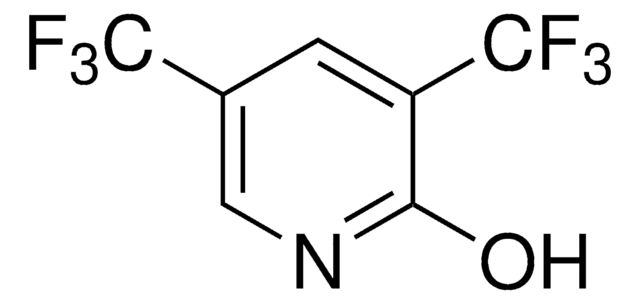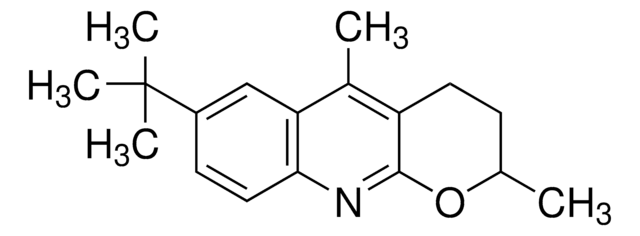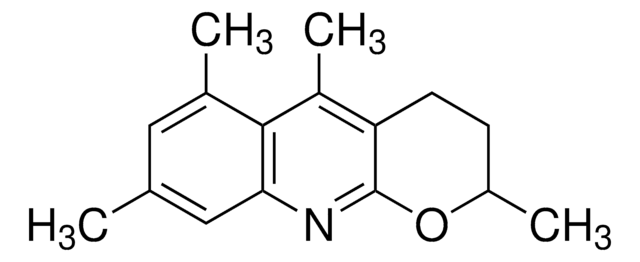791806
Yu-Wasa Auxiliary
97%
Synonyme(s) :
2,3,5,6-Tetrafluoro-4-(trifluoromethyl)aniline, 2,3,5,6,α,α,α-Heptafluoro-p-toluidine
About This Item
Produits recommandés
Pureté
97%
Forme
liquid
Capacité de réaction
reaction type: C-C Bond Formation
Pertinence de la réaction
reagent type: catalyst
reaction type: C-H Activation
Indice de réfraction
n20/D 1.431 (lit.)
n20/D 1.432
Point d'ébullition
186 °C (lit.)
Densité
1.662 g/mL at 25 °C
1.687 g/mL at 25 °C (lit.)
Chaîne SMILES
Nc1c(F)c(F)c(c(F)c1F)C(F)(F)F
InChI
1S/C7H2F7N/c8-2-1(7(12,13)14)3(9)5(11)6(15)4(2)10/h15H2
Clé InChI
FJOACTZFMHZHSC-UHFFFAOYSA-N
Vous recherchez des produits similaires ? Visite Guide de comparaison des produits
Autres remarques
Used in the Preparation of
- Lactams via palladium-catalyzed olefination of arylamides with benzylacrylate, followed by 1,4-conjugate addition
- N-(fluorinated aryl)benzamides as substrates for regioselective C-H amination reactions with O-benzoylhydroxylamines
- Substituted succinimides via palladium-catalyzed carbonylation of N-aryl amides
- N-aryl cyclopropanecarboxamide substrates and various amino acid ligands for palladium-catalyzed C-H activation of cyclopropanes
Produit(s) apparenté(s)
Mention d'avertissement
Warning
Mentions de danger
Conseils de prudence
Classification des risques
Eye Irrit. 2 - Skin Irrit. 2 - STOT SE 3
Organes cibles
Respiratory system
Code de la classe de stockage
10 - Combustible liquids
Classe de danger pour l'eau (WGK)
WGK 3
Point d'éclair (°F)
Not applicable
Point d'éclair (°C)
Not applicable
Certificats d'analyse (COA)
Recherchez un Certificats d'analyse (COA) en saisissant le numéro de lot du produit. Les numéros de lot figurent sur l'étiquette du produit après les mots "Lot" ou "Batch".
Déjà en possession de ce produit ?
Retrouvez la documentation relative aux produits que vous avez récemment achetés dans la Bibliothèque de documents.
Contenu apparenté
The Yu program centers around the discovery of catalytic carbon–carbon and carbon–heteroatom bond forming reactions based on C–H activation. Target transformations are selected to enable 1) the use of simple and abundant starting materials such as aliphatic acids, amines and alcohols, and 2) disconnections that drastically shorten the synthesis of a drug molecule or a major class of biologically active compounds.
Notre équipe de scientifiques dispose d'une expérience dans tous les secteurs de la recherche, notamment en sciences de la vie, science des matériaux, synthèse chimique, chromatographie, analyse et dans de nombreux autres domaines..
Contacter notre Service technique









